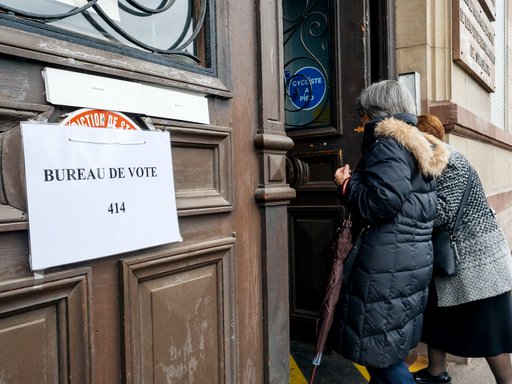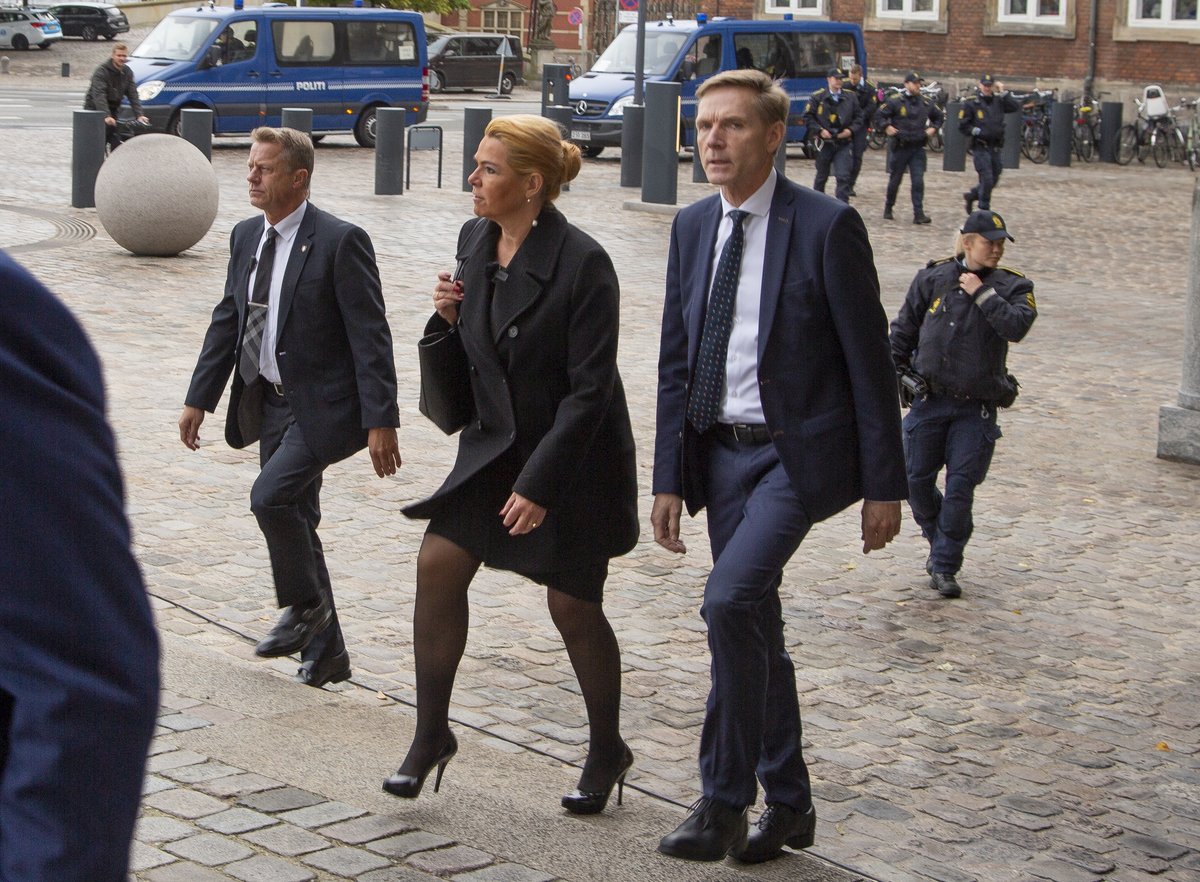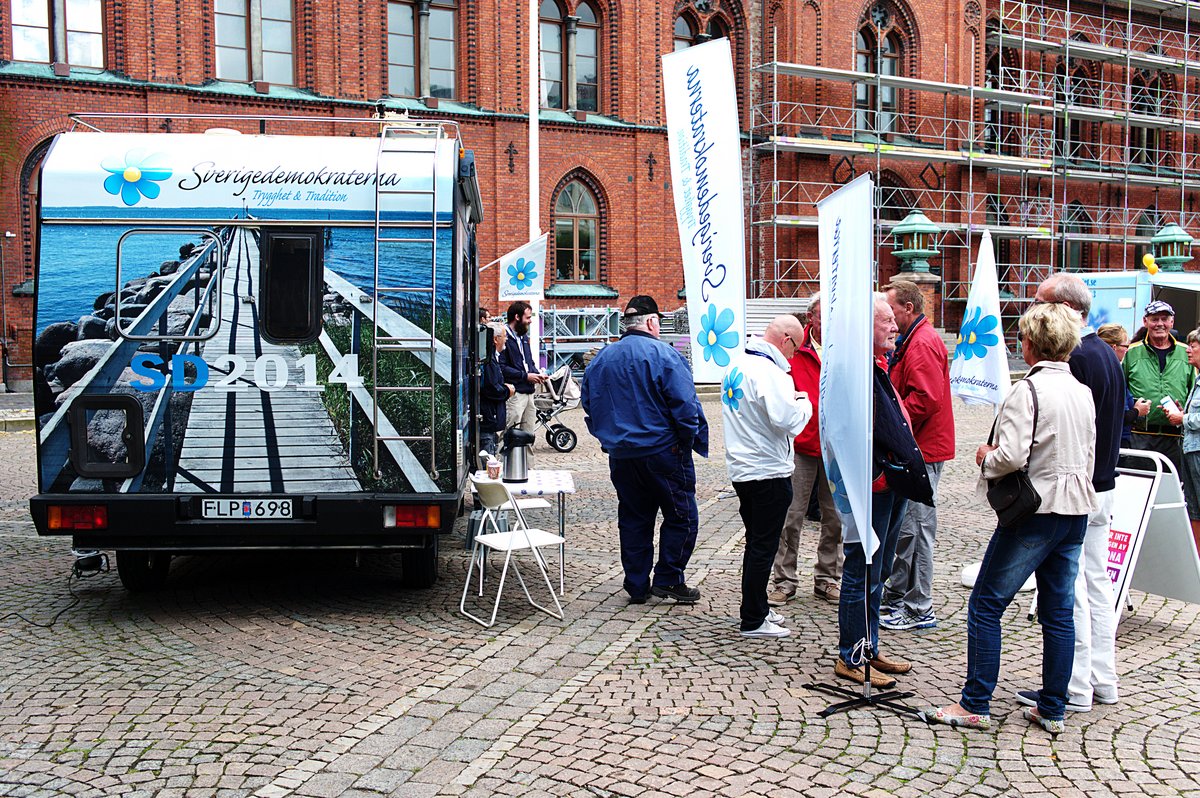Populism and the Growth of the Radical Right in the Nordic countries
An overview of right-wing parties and political polarisation in the Nordic countries in the twenty-first century.

Summary: Radical parties on the political right have a long history in the Nordic countries, and are significant in all of them, except Iceland. They are anti-establishment and anti-immigration, and often pro-welfare. Cas Mudde’s term ‘Populist Radical Right’ is helpful in understanding this movement as populist, nativist and authoritarian. Their electoral fortunes have fluctuated, but everything suggests that they will continue to play a part in the Nordic political systems.
The Nordic countries have a reputation as consensual and peaceful, with low levels of political conflict. It can be debated whether this picture has ever been justified, but in recent years it has become increasingly inaccurate. Nordic countries have suffered terrorist attacks (such as in Copenhagen in February 2015 and Stockholm in April 2017), and there are growing problems with gang violence and organised crime. The exact causes behind these and other social problems are complex, but the political debate has to an increasing extent focused on the extent to which they can be linked to immigration. The Nordic countries have experienced immigration, as well as emigration, throughout many centuries, but since the 1980s immigration has accelerated. This has especially been the case in Sweden, Denmark and Norway. Migration into Finland and especially Iceland has been lower, and began to increase at a later time.
The fortunes of political parties and their leaders can change very rapidly. This article was up to date at the time of publication, but the political landscape may change!
Anti-establishment and anti-immigration

The issue of immigration became a prioritised issue for a new kind of political party, which combine an anti-immigration agenda with strong rhetoric against the political establishment. Parties with such a message began to grow in continental Europe in the 1980s and 90s, for example in France (Front National, now called Rassemblement National), Austria (Freedom Party; Freiheitliche Partei Österreichs), Italy (Lega Nord, now called Lega) and Belgium (Vlaams Blok, now called Vlaams Belang). These, and other parties which followed later, were initially small and isolated but gradually increased their support. In many cases they have also gained political legitimacy. Parties such as Lega/Lega Nord and the Austrian Freedom Party have participated in several coalition governments.
Populist Radical Right parties
What to call these parties has been subject to an intense debate. There is a wide variety of suggestions, such as far right, extreme right, populist right and radical right. One proposal, put forward by the US-based Dutch scholar Cas Mudde has become increasingly influential. His suggestion is to call the parties Populist Radical Right (PRR). They are populist because they see themselves as representing interests of the people against the political elite. They are radical because they seek to achieve profound changes in society and the political system. They are, however, not extreme because they operate within the existing democratic framework, and do not seek to take power via violent means. They are to the right because they believe that inequalities between people are natural and should not be reduced by political means.
Populist radical right parties share a common ideological core with three ingredients:
- Populism: The belief that society is divided into two homogenous and antagonistic groups: the corrupt political establishment and the ‘pure’ people.
- Nativism: The belief that a country should be inhabited by native people, and that non-native people and ideas are threats.
- Authoritarianism: The belief in a strictly ordered society, where breaches against authority are to be punished.
Populist Radical Right parties have a long history in the Nordic countries, although the details vary from country to country.
Denmark and Norway
The still ongoing wave of Nordic anti-establishment populism is often regarded as having started in Denmark and Norway in the early 1970s. Initially the main focus of these new parties was opposition to high taxation and bureaucracy, but immigration became a key part of their agenda from the mid-1980s.
In Denmark there are currently three parties that can be classified as Populist Radical Right. The oldest is the Danish People’s Party (Dansk Folkeparti), which was formed in 1995 after a split from the Danish Progress Party (Fremskridtsparti), which had been formed in 1972. The party leader since 2022 is Morten Messerschmidt. The second is the New Bourgeois (Nye Borgerlige), formed in 2015 by former members of the Conservative People’s Party (Konservative Folkeparti) with Pernille Vermund as leader. The third is the Danish Democrats (Danmarksdemokraterne), formed in 2022 by the former Liberal Party (Venstre) minister for migration Inger Støjberg. These three parties are represented in parliament (Folketing), but all are opposition parties following the election held in November 2022. The Danish People’s Party, however, has in the past served as support party for governments led by the Liberal Party.
In Norway, the Progress Party (Fremskrittspartiet) was formed in 1973. It was originally named after its founder as “Anders Lange’s Party for Strong Reduction in Taxes, Fees and Public Intervention” (Anders Langes Parti til sterk nedsettelse av skatter, avgifter og offentlige inngrep), but took its current name in 1977. The Progress Party served in a coalition government led by the Conservative Party from 2013 to January 2020. At the time of writing, the leader of the Progress Party is Sylvi Listhaug, who replaced Siv Jensen in 2021.
Sweden
For many years Sweden was without a PRR party. The only partial exceptions were a number of local parties in southern Sweden. There was no national breakthrough until 1991, when a party called New Democracy (Ny Demokrati) entered the political stage. This party, which combined immigration criticism with a market liberal pro-business agenda, fell victim to internal splits and disappeared after a few years. After the New Democracy interlude Sweden was again without a significant populist radical right party, until the Sweden Democrats (Sverigedemokraterna, SD) entered parliament (Riksdag) in 2010. The party had already been formed in 1988, but was for many years very small. It was disadvantaged by its problematic origins, as some of the party’s founders and early leadership had Nazi and extremist connections. The Sweden Democrats tried to clean up its image by expelling extremist members and deradicalising the party programme. This bore fruit, at first slowly, but after the electoral breakthrough in 2010 support for the party has increased significantly. Another reason for the success of SD is its leader since 2005, Jimmie Åkesson, whose low-key leadership style has become increasingly popular.
The background of the Sweden Democrats is still considered by many as problematic. It was not until the late 2010s that other parties began to consider some form of co-operation with SD. After the 2022 election, the party reached a co-operation agreement with a coalition government led by the Moderate Party (Moderata samlingspartiet). This agreement includes a drastic reduction in asylum immigration, increased possibilities for expelling foreign citizens found guilty of crime or bad behaviour, and stricter measures against crime.
Finland
It can be argued that Finland has the longest history of anti-establishment populism among the Nordic countries. The Rural Party (Suomen Maaseudun Puolue), formed under a different name in 1959, had its first electoral breakthrough in 1970. Its electoral fortunes then fluctuated, but it served in a coalition government between 1983 and 1990. In 1995, however, it went bankrupt and was closed down. Out of the remains of the Rural Party a new party was formed. Called Perussoumalaiset in Finnish, it was initially referred to in English as the True Finns. In 2011, however, it announced that it prefers The Finns, or the Finns Party, as the English translation of the party name. The Finns Party was at first very small, but began to grow in the early 2000s. It was also at this time that the party started to highlight immigration, which had been almost completely absent from the agenda of the Rural Party, and initially not emphasised by the Finns Party. During the leaderships of Jussi Halla-aho (2017-20) and Riikka Purra (2020-), however, immigration has become a key priority. The Finns Party made a major electoral breakthrough in 2011, and four years later it entered a coalition government together with the Centre (Keskusta) and National Coalition (conservative; Kokoomus) parties (name in Finnish of these two parties please). The time in government was difficult, however, and the Finns party had to agree to a number of welfare cuts. In 2017 the party split, after the outspoken Islam critic Jussi Halla-aho was appointed to succeed Timo Soini as leader. Less radical members defected to form Blue Future (Sininen tulevaisuus), which continued in government. It performed very badly in the 2019 election, and is today insignificant. The Finns Party has recovered after the split, and received 20.1 per cent of the vote in the 2023 election, its best ever recorded result.
Iceland
In general, Iceland is not regarded as having a PRR party of significance. To an extent this is because Iceland has had comparatively low numbers of asylum seekers, although they increased from 2015 onwards. The leader of the Centre Party (Miðflokkurinn), the former Prime Minister David Gunnlaugsson, has spoken out against immigration, while the leader of the People’s Party (Flokkur fólksins) Inga Sæland has compared the treatment of old, sick and disabled native Icelandic people to the situation for immigrants. Sæland has, however, denied that she is opposed to immigration and neither party is widely regarded as populist radical right.
Ideology

The Nordic PRR parties closely resemble Cas Mudde’s core ingredients of populism, nativism and authoritarianism. Where they differ is on issues related to economics and welfare. The Danish People’s and Finns parties are strongly pro-welfare, and with a comparatively left-leaning economic outlook. The Finns Party has been particularly critical of welfare cuts, which caused problems when the party participated in a government that made such cuts. The Danish People’s Party has participated in important welfare reforms together with parties on the left, for example about pensions. This combination of anti-immigration and pro-welfare is sometimes called welfare chauvinism. The Danish New Bourgeois and Norwegian Progress Party, on the other hand, put more priority on market economics, low taxes and in general a more right-leaning economic agenda. The Sweden Democrats and Danish Democrats are somewhere in between.
Here to stay?
In summary there are significant Populist Radical Right parties in all Nordic countries, except Iceland. Their electoral fortunes have fluctuated, but everything suggests that parties prioritising restrictive immigration policies will continue to play a part in the Nordic political systems. So far, PRR parties have only participated in governments in Norway and Finland, but it is entirely possible that this could happen also in Denmark and Sweden. Indeed, the Danish People’s Party could have entered government after a very good result in the 2015 election, but decided by itself not to do so. This turned out to be a mistake, and the party lost a lot of support in the 2019 and 2022 elections. It still remains possible that it, or another Populist Radical Right party, may enter a Danish government in the future. The same applies to Sweden, where the strong electoral performances of SD could mean that this party will enter government at some point.
Political science can shed light on society
This article is published in response to an interest in political and social polarisation, and the far right.
Further reading:
- Ann-Cathrine Jungar and Anders Ravik Jupskås, ‘Populist Radical Right Parties in the Nordic Region: A New and Distinct Party Family?’, Scandinavian Political Studies, 37:3 (2014), pp. 215-343.
- Cas Mudde, The Far Right Today (Cambridge (UK) and Medford (MA): Polity Press, 2019).
- Cas Mudde, ed., The Populist Radical Right: A Reader (Abingdon and New York: Routledge, 2017).
- Elisabeth Carter, ‘Right-wing extremism/radicalism: reconstructing the concept’, Journal of Political Ideologies, 23:2 (2018), pp. 157-182.
- Jens Rydgren, The Oxford Handbook of the Radical Right (Oxford: Oxford University Press, 2018).

